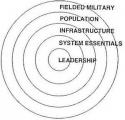After the men were gone these individual emotions flowed into one another like little streams into a river of fear that flooded the rural towns of Massachusetts. On a smaller scale, it was not unlike the
grande peur that swept across the French countryside in 1789, when ordinary people were suddenly consumed with a sense of desperate danger....
On the North Shore of Massachusetts, there was a special panic called the "Ipswich fright." A report spread through Essex County that British soldiers had come ashore in the Ipswich River and were murdering the population of that town. The rumor traveled at lightning speed up and down the coast. It was written that "all the horses and vehicles in the town were put in requisition: men, women, and children hurried as for life toward the north. Large numbers crossed the Merrimack, and spent the night in deserted houses of Salisbury, whose inhabitants, stricken by the strange terror, had fled into New Hampshire....
The great fear also spread to Loyalists in Boston and even to the Regulars themselves. Admiral Samuel Graves later remembered a wave of hysteria swept through the British troops who were suddenly conscious that they were in "the neighborhood of so enraged an host of people, breathing revenge for their slaughtered countrymen...."











 .
.

Bookmarks